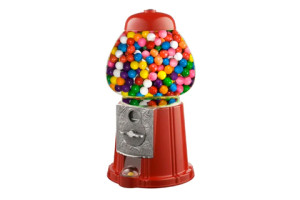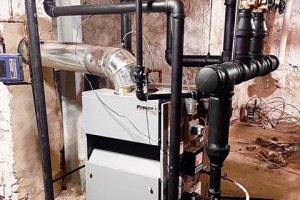Here’s a checklist of things to do as you negotiate with a heating contractor. Believe me; the good guys will thank you for being this thorough. An educated consumer is their best customer, especially when it comes to steam. Here goes.
- Walk the contractor through your home and discuss your comfort concerns. If it’s too hot in this room and too cold in that one, let him know. If there are gurgling or banging noises in the pipes or radiators, mention this, and ask the contractor to suggest a remedy. Don’t expect a new boiler to magically solve your system-related problems. Explain to the contractor that you’re buying comfort, not just a new boiler, and that you expect the entire system - boiler, pipes and radiators - to work properly when the job is done. At this point, a good heating contractor will most likely explain your options. Don’t be surprised if those options add to the cost of the job. Many steam systems, as you now well know, suffer from ailments that have nothing to do with the boiler. When the contractor suggests these changes, ask if he will guarantee the results. A good heating contractor will. If he’s not willing to stand behind his work, there’s a good chance he’s a knucklehead. Call someone else.
- Don’t let the contractor base the size of your new boiler on the size of your old boiler. He must measure your radiators and analyze their ability to condense steam. If he bases the size of your new boiler solely on the size of your present boiler, he’s discounting the possibility that something may have changed during the past 70 or 80 (or more!) years. He’s also acknowledging that the original installer was infallible (and we don’t even know who that guy was). If the contractor says, “Well, the old one worked well for years so let’s use the same size,” know that this guy is not someone who pays attention to details. Show him to the door.
- Also, don’t let the contractor base the size of your new boiler on a heat-loss calculation of your home. Heat loss calculations mean absolutely nothing when it comes time to replace an old steam boiler. These calculations mean a lot when you’re sizing the steam radiators, but you’re not replacing the radiators, are you? Remember that steam is a gas that will eagerly condense on cold metal. The boiler must be able to make enough steam to reach the furthest radiator before all the steam turns to water. In other words, the boiler’s ability to produce steam must match the system’s ability to condense steam. There’s no way around this. If the new boiler is too small, parts of your home will probably always be cold and you’ll burn more fuel than you should. If the boiler is too large, the burner will short-cycle, run inefficiently and the burner parts and controls will wear out long before their time. And again, you’ll burn more fuel than you should. If the contractor doesn’t take the time to survey and carefully measure your pipes and radiators, he doesn’t understand steam heating. Tell the knucklehead to have a nice day and then show him the door.
- The piping around a modern steam boiler is crucial to the production of dry steam (steam that contains no more than two percent water). If the steam is wet, it will condense before it reaches all of your radiators. You’ll wind up with high fuel bills and uncomfortable rooms. Nowadays, most reputable steam boiler manufacturers consider the piping immediately around the boiler to be a part of the boiler. They publish installation booklets showing the contractors how they must install these boilers. If a contractor doesn’t follow the manufacturer’s instructions, the boiler won’t operate efficiently, and there’s a good chance the manufacturer won’t honor their warranty should you have a problem. So, insist on seeing the installation and- operating manual beforehand. Have the contractor show you the correct near-boiler piping for the unit. Have him explain it all. And have him include in his contract a clause saying that he will install the boiler according to those instructions. This alone will scare away heating contractors who don’t know what they’re doing when it comes to old steam systems. A knowledgeable contractor will never object to this very reasonable request.
- Don’t accept copper tubing for the boiler’s supply piping. Copper expands and contracts much more than steel. Because steam piping can twist into some odd angles, the expansion of the copper often puts a lot of torque on the soldered joints. That twisting frequently causes the joints to come undone after a few years. And then you’re on your own. Copper can also leach out into the boiler, shortening the boiler’s life through dielectric corrosion. Proper steam piping calls for threaded steel pipe and fittings. The threads allow the steel pipe to twist without coming apart. Copper tubing is what the low bidder will offer. If you’re planning to stay in your home for more than a year, insist on properly installed, threaded steel pipe.
- Modern steam boilers sometimes don’t get along well with old chimneys. Make sure you ask every heating contractor who steps into your home about your chimney. This is for your safety and protection. An old chimney may need to be lined with stainless steel to keep the flue gases from condensing on their journey to the top. Condensing gases form an acid that can eat through the mortar and cause parts of your chimney to fall apart. This, of course, can lead to poor venting of the products of combustion, and potentially dangerous levels of carbon monoxide in your home. Carbon monoxide is deadly. If the contractor won’t talk about your chimney - if all he cares about is the boiler sale - he is not a professional. Go no further with this person. And know that a stainless steel chimney liner isn’t cheap. You’ll risk your life if it’s needed and you try to do without it, though.
- Steam pipes must be insulated to keep the steam from condensing before it reaches the radiators. In the old days, we used asbestos. Nowadays, we spend a lot of money removing the asbestos, and we rarely replace it. Most folks figure the heat isn’t “lost” because it’s still inside the house. But if the steam is condensing in your basement pipes, it won’t be condensing in your bedroom radiators on the second floor. You’ll be burning lots of fuel and you’ll be miserably cold in some of those rooms. You know all of this by now. If your steam supply pipes are uninsulated, have the contractor include a price for new insulation. Or insulate them yourself if you’d prefer.
- Reputable boiler manufacturers also include thorough cleaning instructions in their installation-and-operating manuals. The contractor must follow these instructions if your new boiler is to make dry steam. Have the contractor show you these instructions, and have him write on the contract that he will follow them to the letter. Then make sure he does. It takes nearly a full day to properly clean an old steam system. There is no chemical or magic potion I know of that can make decades worth of dirt vanish. Don’t accept shortcuts. And so that you’re better able to compare prices, ask each contractor to give you the price of the cleaning as an addendum to the installation contract. If he tells you the boiler doesn’t need cleaning, and that he can solve any problems with a few cans of chemicals after the job is done, he’s a knucklehead.
- Have the contractor install a drain valve in the boiler’s mud leg. The mud leg is the drum at the very bottom of the boiler, the place where sediment will gather. If you don’t insist on this drain valve, you probably won’t get it. Most contractors will leave the drain valve out to save a few bucks, but without it, you won’t have a way to flush sediment from your boiler as the years go by. Dirty boilers have shorter life spans than clean boilers. How often do you want to buy this thing?
- If you’re not going to do it yourself, get the contractor to inspect your air vents and replace them if necessary. You’ll find these air vents on your radiators (if you have a one-pipe steam system) and near the ends of your mains (on both one- and two-pipe steam systems). Good air vents make a dramatic difference in system performance. Even a brand-new boiler will gobble fuel if the air vents are old and clogged. Be prepared to pay extra for the vents, and know that there’s a definite range of quality when it comes to these things. Like all things in life, you get what you pay for. Buy well from a reputable supplier, and take comfort in knowing that this is one of the best investments you can make in your old steam system.
- Heating contractors buy their equipment from plumbing and heating wholesalers who handle specific brands of boilers. Since the wholesaler extends credit to the contractor, the contractor will usually buy what the wholesaler stocks. Because of this, you may find it difficult to get three or four competitive prices if you base the comparison on a particular manufacturer’s boiler. That’s because the quoting contractors buy from different wholesalers. If you ask for Brand A and the contractor’s wholesaler stocks Brands B or C or D, he will try to sway you to the brand that he’s used to installing. There’s nothing wrong with this. Rather than try to level the playing field by having them all quote on a certain brand of boiler, or a certain model number, do this: Let each contractor quote on what he thinks will best heat your home, but have each contractor guarantee the results in writing. Have them say, for instance, that when they’re finished, your house will heat evenly, and with no noise or squirting air vents. Some contractors will run for the hills when they realize you’re buying results instead of just a boiler, but you’re better off without those guys anyway. A good contractor will talk to you seriously about your system’s problems and their solution. He’ll most likely suggest things that go beyond a simple boiler replacement. There are people out there who have no problem guaranteeing results.
- And know that competent steam contractors generally charge more for a boiler replacement than others, but these guys deliver those wonderful results - increased comfort and fuel savings. They will never be the low-bidder, but they will do what they say they’ll do, and I think they’re well worth their price.
A very good place to meet many competent contractors is on the Wall here at www.HeatingHelp.com.
You can also ask questions at your local plumbing & heating supply house. Stop by at a time when they’re not that busy (not first thing in the morning or late in the day) and ask if you can speak to the “Heating Guy” (most places have one). He won’t be selling you anything because his customer is the contractor, but he’ll be able to tell you about the good guys in the area.
Finally, know that a good steam contractor doesn’t have to be old. Some of the sharpest steam contractors I know aren’t even 40 years old. Each of them has done the research, though, and each has a passion for this stuff. That’s the guy you’re looking for.
Good luck!
To learn more, read We Got Steam Heat! A Homeowner's Guide to Peaceful Coexistence by Dan Holohan and visit our Find a Contractor page to find a heating contractor in your area.

Dear Reader
Hello, old friend. I’m writing today to say thanks, and to say farewell. This will be my last column.
Published on 12/06/2023 12:34 PM
by
Dan Holohan

An Important Skill for Teaching Tradespeople
My six-year-old grandboy, Brendan, was in the vestibule of the diner when the bubblegum machine caught his attention. It was one of those spiral models that appeared in t...
Published on 12/06/2023 11:44 AM
by
Dan Holohan

Subdural’s Triumph
Subdural posed a question on The Wall at HeatingHelp.com in the Strictly Steam section, where some of the sharpest knives in the drawer post every day. The question was a...
Published on 12/06/2023 11:25 AM
by
Dan Holohan




